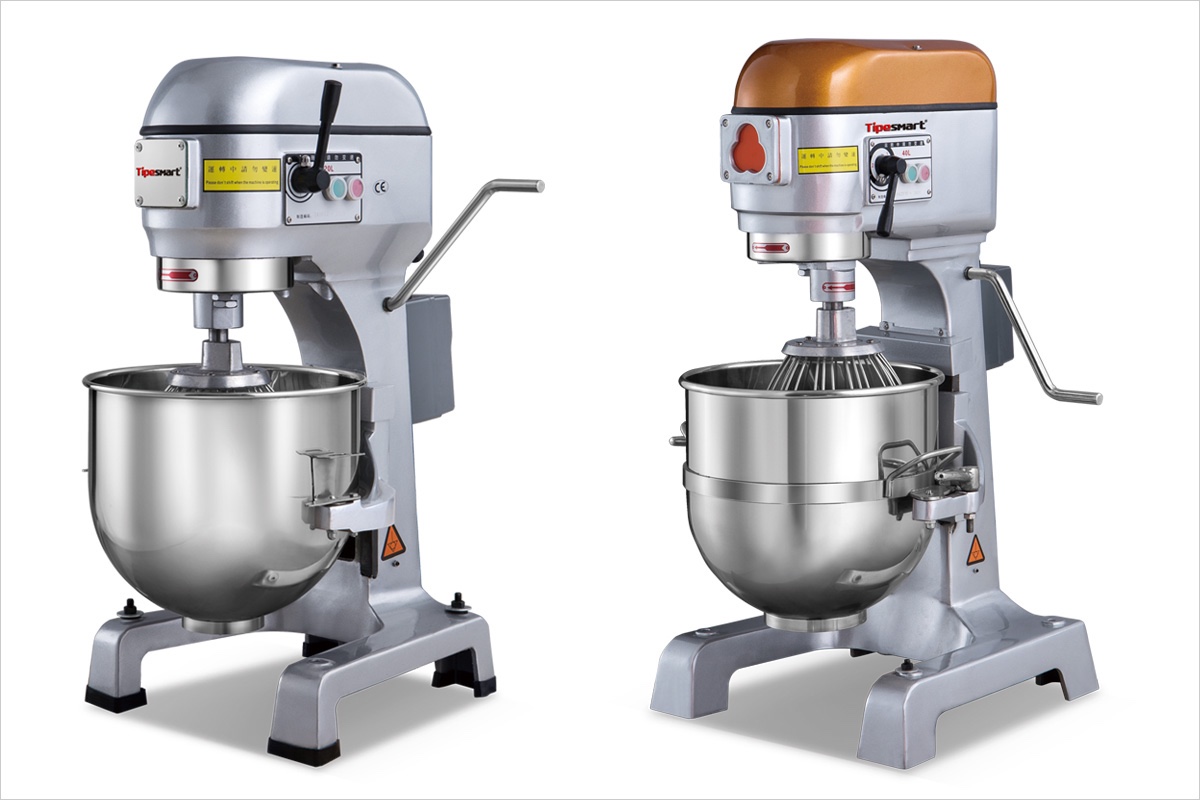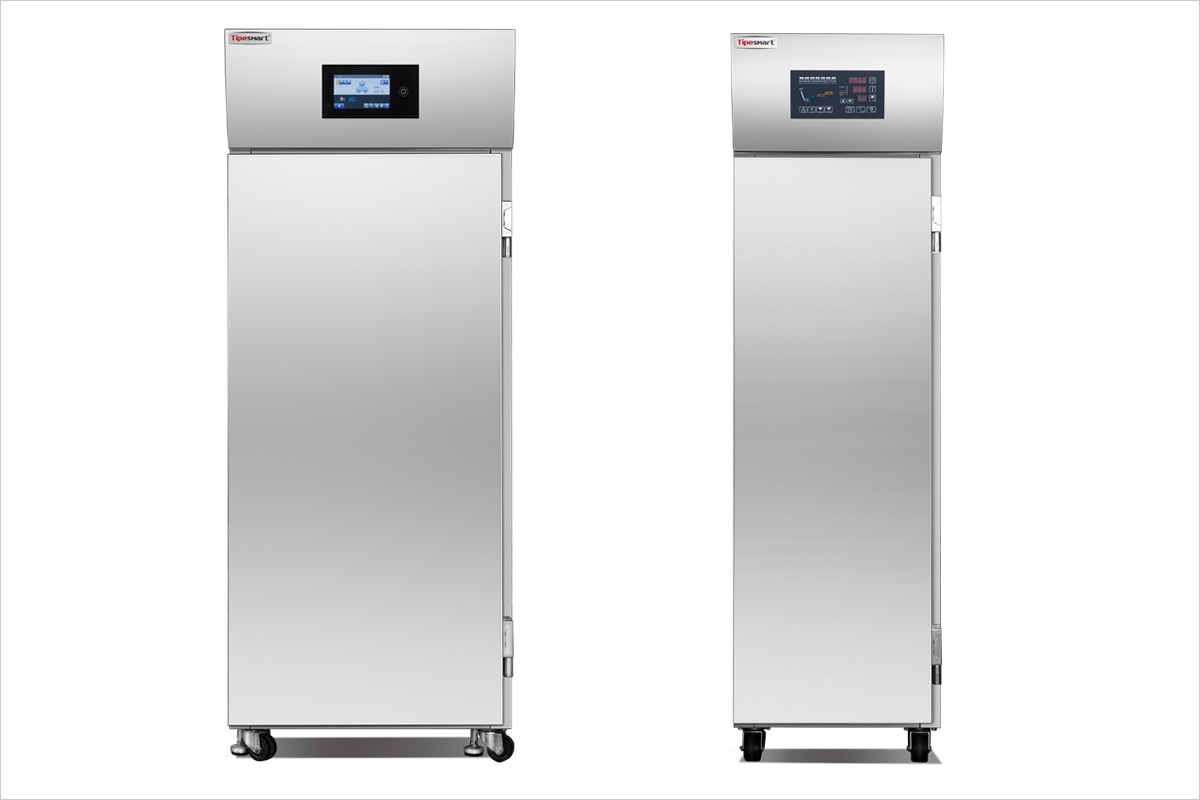
The planetary mixer is one of the most used Bakery Equipment
The planetary mixer is one of the most popular tools in the industry and factory specific processes and finds its applications in food manufacturing plant, bakeries, medical drugs manufacturing units and even the construction material manufacturing units. This post will comprise the details and advantages of a Bakery Planetary Mixer. Let us begin with a small introduction to the Planetary Mixer Machine used in the bakeries.
What is a Bakery Planetary Mixer?
The Planetary Mixers are also called as the cake mixers, cream mixers or the dough mixers.
Its unique nature of motion around its own axis and throughout the circumference of the utensil in which the dough and baking ingredients are there; gives it the name - Planetary Mixer Machine. Its movements resemble the movements of the planets.
The Planetary Mixer Machine is highly versatile and is thus one of the most used machines in small bakeries and patisseries.
Another unique feature of the Bakery Planetary Mixer is that it comes with interchangeable utensils that can be used for different purposes. Some examples are dough hook, whisk and mixing paddle
Advantages of using a Bakery Planetary Mixer
All the baked goodies need better and accurate mixing. Better mixing means better taste, better fluff and better raw material utilization. The planetary mixers ensure the best possible mixing of the ingredients and thus the goodies prepared with it are the best ones. Read on to find out more about the advantages of the Tipesmart Planetary Mixer Machine.

How to Choose the Right Commercial Mixer
Before making your purchase, there are three main questions you will want to ask yourself:
1.) What will you be mixing?
Different types of dough and batter will have different consistencies, and as a result not every mixer is right for every job - kneading a batch of thick, stiff dough is going to require more power than mixing meringue or icing, for example. A commercial bread mixer and pizza dough mixer will be different than a mixer meant for whipping delicate egg whites.
Finding the absorption ratio (Liter of water divided by Liter of flour) for some of your most commonly used dough is a good way to figure out what types of mixers might best suit your needs; the lower the absorption rate, the more difficult the dough will be to mix and in turn, the more powerful your unit should probably be.
2.) What type of usage do you expect from your mixer?
All mixers are designed to handle the rigors of commercial use, but some are better equipped for certain types of mixing than others; be sure to check the manufacturer's literature on the product pages for more information.
3.) How much will you be mixing?
How much you will be mixing plays a large role in what size of mixer you will want to look at. A small restaurant can take care of most needs with a 5 - 20 qt. planetary mixer. In contrast, a pizzeria or bakery will want to look at 40 qt. or larger, or even a spiral mixer in very large-scale applications. This is because the mixer is being used almost constantly and turning out high volumes of product.
Also, be mindful of the fact that the bowl can't be filled to the brim and different ingredient factors will affect how big each batch can be:
Higher flour protein content = smaller batch size
Lower water temperature = smaller batch size
Less water in the dough = smaller batch size
Higher mixing speed = smaller batch size
More oil / shortening in the dough = smaller batch size

What are the standard safety features of a commercial mixer?
Unguarded food preparation mixing machines in commercial kitchens can cause serious injuries, including amputations and broken bones. This page can help employers to control the risks to employees using, cleaning, and maintaining food preparation mixers.
Food preparation mixers can cause serious injuries
Rotating attachments on unguarded food preparation mixers are a health and safety hazard in commercial kitchens. Workers reaching into the bowl to remove a product, clean or add extra ingredients during the mixing process risk being caught in the rotating parts of an unguarded mixer.
Food preparation mixers can cause serious injuries, including amputations, fractures, cuts, and de-gloving. De-gloving is where the top layers of skin and tissue are torn from the underlying muscle, connective tissue, or bone.
Reduce the risks
If it is not reasonably practicable to eliminate the risks associated with the plant, an employer must reduce the risks, so far as is reasonably practicable. Engineering controls such as guards and administrative controls such as instruction, training, and supervision can help reduce the risks from food preparation mixers.
Use interlocked guards
Food preparation mixers should have guards to prevent rotating parts from causing injury. The most effective guard is a purpose-built interlocked guard.
An interlocked guard is a physical barrier linked to the power or control system of a machine. The interlock may be mechanical or electrical. The guard can be clear polycarbonate or mesh.
There should be two interlocks on a food preparation mixer. One interlock confirms the guard is in place, the other confirms the mixing bowl is in position. The machine should not work if either interlock is not set.
The interlocked guard should:
prevent access to moving parts
prevent the machine from operating unless the guard is in place
stop all moving parts once the guard is lifted
stop the mixer if the interlock switch fails
be solidly constructed and securely mounted
be designed so it cannot be bypassed or disabled
provide a chute if procedures require batch adding without stopping the mixer
not create a risk of injury from maintenance and cleaning
Training and supervision
Employers

Bread Proofing Box Functions
Most bread proofing boxes are just that—a simple box in which you place your dough for the final rise. However, some bread proofing boxes, particularly the electric versions, have additional functions to make your life easier:
Timer
A timer is very handy for making sure that your dough is not left to rise for too long! The timer may be an alarm that tells you to remove your dough, or it may be able to turn off the heat source.
Temperature Source & Control
The premium versions of bread proofing boxes come with an integrated heat source. These will give you the best possible results when proving your dough, as nothing is left to chance.
If you have a bread proofing box without a heat source, you will need to provide one. Options include a heat mat or an oven on the lowest temperature setting.
You may also be able to utilize one of your other kitchen gadgets, such as a slow cooker or food warmer.
Some bread proofing boxes come with temperature control, perfect for keeping your little yeasty friends warm and thriving. Yeasts are very fussy and will not like being too warm or too cold!
Ideally, the heat source should be thermostatically controlled, so it turns off when the optimum temperature is reached.
If not, or if you are using an external heat source, it can be useful to place a thermometer somewhere visible inside your proofing box.
Humidity Control
The air within a bread proofing box must be humid to prevent a skin from forming on the dough. This skin will hinder the ability of the bread to rise, and also result in a thick crust on your baked loaf.
Some bread proofing boxes can add humidity to the air, normally through a water reservoir. Alternatively, you can stand a small cup of boiling water inside the proofing box to give a continuous supply of steam.
Viewing Window
A viewing window is pretty much essential when selecting a bread proofing box. Even if you have a thermostatically controlled heat source and a timer, you will still need to keep an eye on what your bread is up to!
Yeasts can behave in all sorts of weird and wonderful ways, and you may find your dough takes a lot more or less time to rise than you expected.

Can You Leave Bread Dough To Rise Overnight?
There’s a time in every bread baker’s life where you end up making bread dough later in the day than you expected, so it’s getting too late to bake the dough.
When this happens, you have the option to stay up late and bake it when it’s ready, bake it whilst it’s underproofed (a big no-no), or leave it out and hope for the best in the morning.
None of these are particularly appealing, but leaving it out overnight sounds the best as you’ll be able to bake it in the morning and have fresh bread for a late breakfast or lunch.
Bread dough can be left to rise overnight if it’s stored in the refrigerator. Storing dough in the refrigerator can slow the rise for 8-48 hours or longer, depending on the dough. Some dough can be left out at room temperature overnight, but this often leads to overfermentation.
This means that you might wake up to fully proofed dough that’s ready for baking. I don’t know if there’s anything better than the smell of freshly baked bread on a morning.
If you don’t have enough space for your dough in your refrigerator, you might not have to worry as I’m going to discuss alternative ways to store your dough later in this article.
Why Refrigerating Your Dough Is Important
The most important reason that you want to refrigerate (retard) your dough is so you can prevent it from turning into a flat and overfermented mess.
When the dough overferments, or overproofs, it means that either the yeast has completely run out of their food (sugars and starches in the dough) or the dough has risen too much and collapsed.
The idea behind refrigerating the dough is that it can slow the activity of the yeast dramatically, which in turn slows their ability to consume their food and produce more gas.
If you were to leave the dough out overnight, it is almost certain to overferment, but this is significantly less likely to happen if it’s stored in the fridge.
An added bonus to this extra-long rising time is that the flavors can develop much more. The longer the dough rises and the longer the yeast gets to do their work, the better the bread is going to taste.
This is because the yeast can break down the large molecules in the dough into smaller molecules that are more complex and flavorsome, which makes it even more pleasant to eat.
The final reason to store your dough in the fridge is if it’s enriched.
Dough containing anything that can spoil easily, like eggs and milk, will easily go bad if left out for too long. You want to minimize the risk of the ingredients in the dough going bad, so you need to store it in the fridge. Leaving the dough out for too long will invite too much bacteria and can leave you with bread that may be unsafe to eat.
Another thing to consider is if your dough contains sugar. The sugar is going to feed the yeast, which causes it to produce gas more quickly and therefore overproofs faster.
